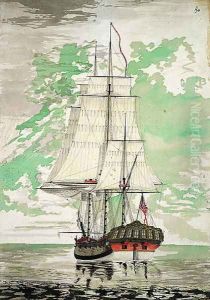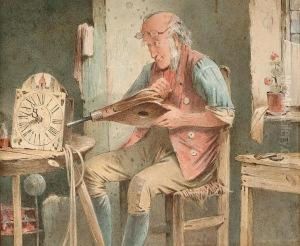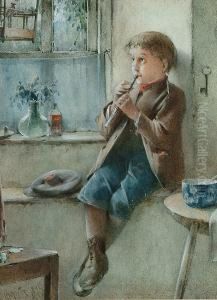Henry Roberts Paintings
Henry Roberts was a British architect known for his contributions to social housing and the promotion of sanitary living conditions during the 19th century. Born in 1803, Roberts became an advocate for the improvement of housing for the poor, an issue that was particularly pressing during the Industrial Revolution as urban populations swelled and living conditions in cities deteriorated.
After completing his architectural training, Roberts began his career at a time when the industrial cities of Britain were expanding rapidly. The living conditions of the working classes in these cities were often appalling, with overcrowded and unsanitary slums being the norm. Roberts was deeply affected by the plight of the poor and was one of the early pioneers in the design of model housing that aimed to provide better living conditions for workers.
Roberts's most notable contribution to architecture was the development of the 'model dwelling' concept. His designs included innovations such as proper ventilation, sufficient natural light, and communal facilities that aimed to improve the standard of living and promote the health of the occupants. He was also involved in the design and construction of several model housing projects, including the widely acclaimed Finsbury Estate in London.
In addition to his work in social housing, Henry Roberts was also known for his role in international exhibitions, having designed the layout for the Great Exhibition of 1851 in London. He was a founding member of the Society for Improving the Condition of the Labouring Classes and published several influential reports and treatises on housing reform.
Roberts's contributions to architecture and social reform were recognized in his time, and he was awarded various honors for his work. His approach to social housing influenced subsequent generations of architects and urban planners. Henry Roberts died in 1876, leaving behind a legacy as a compassionate and innovative architect who used his skills to address some of the critical social issues of his day.


